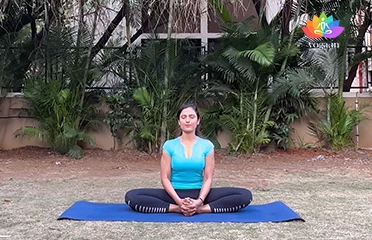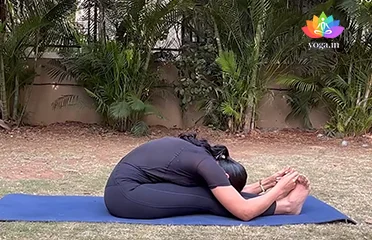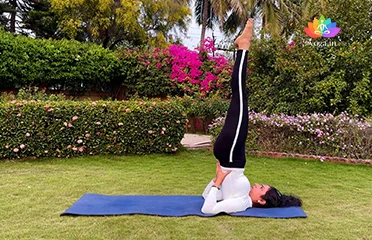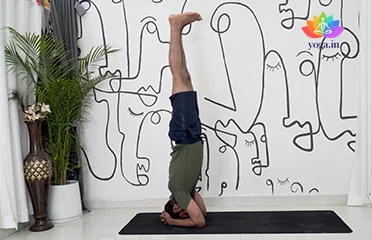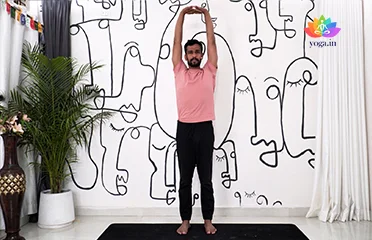Bhadrasana (Gracious Pose | Butterfly Po
भद्रासन / Gracious Pose | Butterfly Pose
The Sanskrit name is derived from Bhadra (भद्रा) meaning gracious, [�K]
Paschimottanasana (Seated Forward Bend)
पश्चिमोत्तानासन / Seated Forward Bend
The Sanskrit name is derived from three sanskrit words: Paschima (पश्चिमा) [�K]
Sarvangasana (Shoulderstand)
सर्वाङ्गासनI / Shoulderstand
The Sanskrit name is derived from Sarva (सर्वाङ्ग) meaning all, [�K]
Sirsasana (Headstand)
शीर्षासन / Headstand
The Sanskrit name is derived from Sirsa (शीर्ष) meaning head and asana [�K]
Tadasana (Mountain Pose)
ताड़ासन / Mountain Pose
The sanskrit name is derived from tada (ताड़ा) meaning mountain and [�K]
How Yoga Can Help Cure Spermatorrhoea:
Spermatorrhoea, also known as involuntary ejaculation, refers to the release of semen without voluntary control. It can lead to physical and mental discomfort, affecting overall well-being. Yoga offers a holistic approach to managing spermatorrhoea by addressing both the physical and psychological aspects of the condition. Through a combination of gentle postures, breathing techniques, and relaxation practices, yoga can help regulate the reproductive system, reduce stress, and promote emotional balance.
Understanding Spermatorrhoea:
Spermatorrhoea is a condition characterized by involuntary ejaculation, often occurring during sleep or as a result of sexual stimulation. It can be caused by various factors, including hormonal imbalance, excessive sexual activity, or underlying medical conditions. Spermatorrhoea can lead to feelings of embarrassment, guilt, and anxiety, affecting mental health and quality of life.
Yoga’s Role in Relieving Spermatorrhoea:
Yoga offers a natural and effective way to alleviate the symptoms of spermatorrhoea. Specific yoga practices can help strengthen the pelvic muscles, improve blood circulation to the reproductive organs, and calm the nervous system. By reducing stress and promoting relaxation, yoga can help restore balance to the body and mind, thereby reducing the frequency of involuntary ejaculation.
Key Factors Contributing to Spermatorrhoea:
Several factors can contribute to the development of spermatorrhoea, including:
- Hormonal Imbalance: Fluctuations in hormone levels, such as testosterone, can affect ejaculatory control.
- Excessive Sexual Activity: Overstimulation of the reproductive system can lead to involuntary ejaculation.
- Psychological Factors: Stress, anxiety, and performance pressure can contribute to ejaculatory dysfunction.
- Underlying Medical Conditions: Certain medical conditions, such as prostate problems or nerve damage, can affect ejaculatory function.
- Poor Lifestyle Habits: Unhealthy diet, lack of exercise, and substance abuse can impact reproductive health.
Symptoms of Spermatorrhoea:
Common symptoms of spermatorrhoea include:
- Involuntary Ejaculation: Release of semen without voluntary control, often during sleep or arousal.
- Fatigue: Feeling tired or lethargic due to frequent ejaculation.
- Weakness: Loss of strength or vitality following ejaculation.
- Back Pain: Discomfort or pain in the lower back associated with ejaculatory dysfunction.
- Anxiety: Feeling anxious or distressed about the inability to control ejaculation.
Treatment of Spermatorrhoea through Yoga and Pranayama:
Yoga and pranayama offer effective strategies for managing spermatorrhoea. Some beneficial practices include:
Specific Yoga Poses:
1. Mula Bandha (Root Lock): Strengthens pelvic muscles and improves ejaculatory control.
- Sit comfortably with your spine straight and shoulders relaxed.
- Contract the muscles of the pelvic floor, as if trying to stop the flow of urine.
- Hold for a few seconds, then release.
2. Vajrasana (Thunderbolt Pose): Improves digestion and regulates reproductive function.
- Kneel on the floor with your buttocks resting on your heels and hands on your thighs.
- Keep your back straight and breathe deeply for several breaths.
Pranayama Exercises:
Bhastrika Pranayama (Bellows Breath): Increases energy and vitality, promoting overall well-being.
- Sit comfortably with your spine straight and shoulders relaxed.
- Inhale deeply through both nostrils, filling your lungs with air.
- Exhale forcefully through both nostrils, contracting your abdominal muscles.
- Repeat for 1-2 minutes, gradually increasing the duration.
Diet for Spermatorrhoea:
A balanced diet can complement yoga treatment for spermatorrhoea. Recommendations include:
- Nutrient-Rich Foods: Incorporate fruits, vegetables, whole grains, and lean proteins into your diet.
- Hydration: Drink plenty of water to stay hydrated and support overall health.
- Avoid Stimulants: Limit caffeine, alcohol, and spicy foods, which can exacerbate ejaculatory dysfunction.
Caution for Spermatorrhoea:
While practicing yoga for spermatorrhoea, it is essential to:
- Listen to Your Body: Avoid overexertion and honor your body’s limits.
- Practice Mindfulness: Be present during yoga practice, focusing on your breath and sensations.
- Seek Professional Guidance: Consult a healthcare provider if you experience persistent symptoms or have underlying medical conditions.
Contraindications for Spermatorrhoea:
Individuals with severe spermatorrhoea or underlying medical conditions should:
- Avoid Vigorous Yoga Practices: High-intensity exercises may worsen symptoms and lead to complications.
- Be Cautious with Inversions: Poses that compress the abdomen or stimulate the pelvic area should be practiced mindfully.
- Consult a Yoga Instructor: Seek guidance from a qualified yoga instructor or healthcare professional for personalized recommendations.


